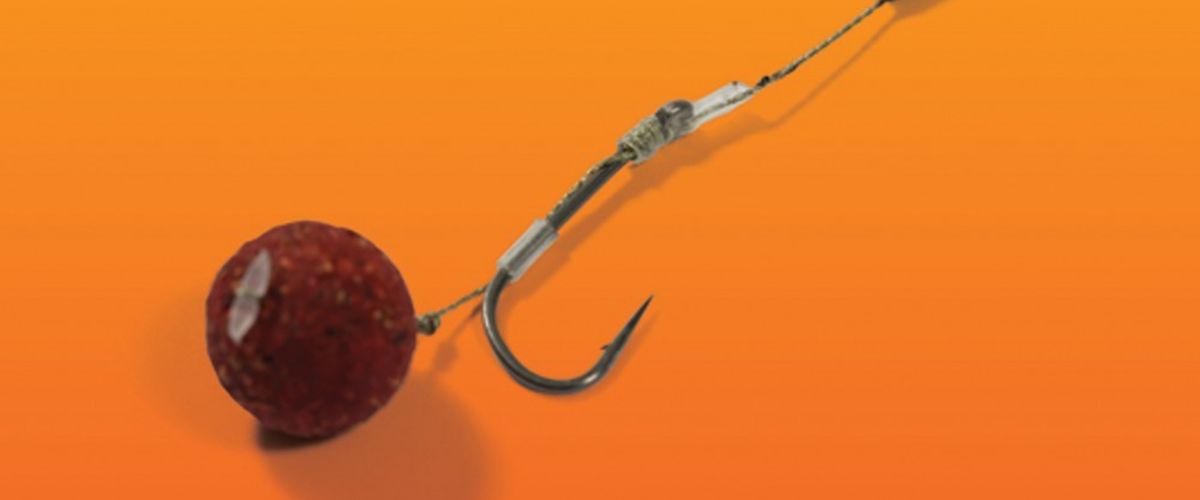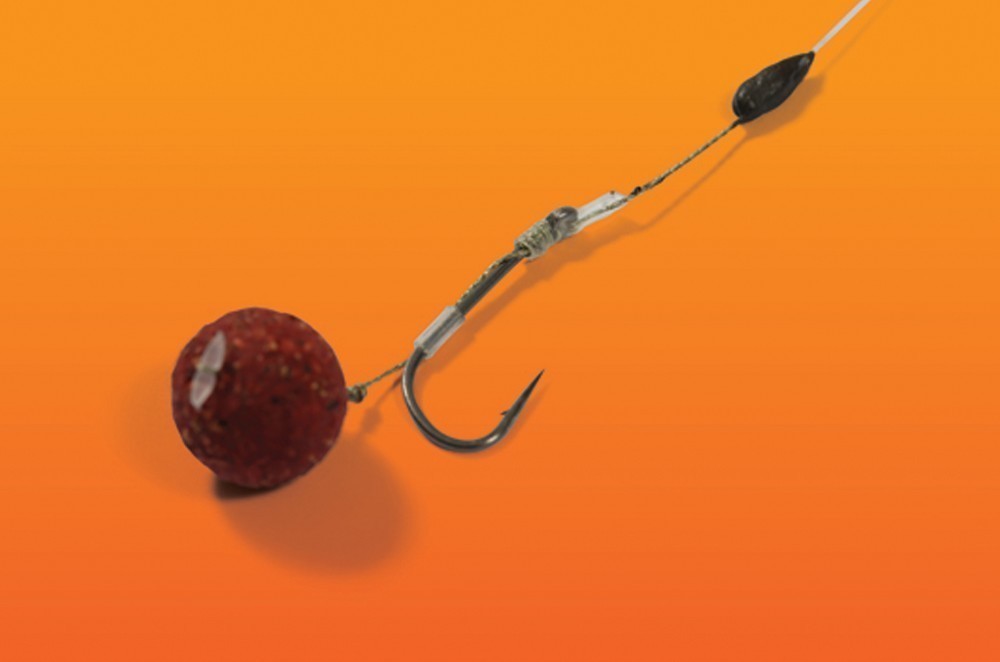
Stick with what you know that works or evolve?
Frank Warwick shares his thoughts as to how he has perhaps, had the best of both worlds...
Some readers might be aware of my love for Longshank Blowback Rigs; I’ve used this type of set-up for probably 25 years or more now (Fig. A). It seems a ridiculously long time to continue using the same, virtually unchanged rig, but there’s good reason why I do, and that’s quite simply that it works everywhere I choose to fish it (Fig. B). I like to think that I’m not stuck in a time warp as such, rather I’m very aware that things can, and often do get superseded - be this by way of more efficient, or even trend-driven rigs.
FIG. A My Longshank Blowback Rig: it’s tried, tested and trusted, but am I missing out?
Experiment
Given what I’ve said, I like to experiment on the rods and let results lead the way. Basically it’s trial and error and making comparisons. The last thing I want to do is blindly stick with a rig that might become out-fished by a more recent innovation, that also sees me missing out by being complacent and stubborn!
Over the last few years it became apparent to me, that virtually every carp angler I encountered had changed over to Ronnie Rigs or some form of Hinged Stiff Rig variant; I noticed far fewer Chods being used. With seemingly every man and his dog on a Ronnie Rig then, was I at a disadvantage if I didn’t change my own approach? Perhaps my good old Longshank Blowback set-up was a bit dated? I set out therefore, to find out, but before I started making my comparisons with Ronnie Rigs, I had a more pressing test to do over a period of time (Fig. C). One session proves nothing obviously, and I like to try things several times on different waters to establish some kind of pattern.
Firstly, I wanted to see if a Ronnie Rig with a pop-up out-fished a German Rig variant in conjunction used with wafter hookbaits. I’ve always found my Longshank Rig more effective with wafters - of course it does work with pop-ups, but my findings over many years saw me always return to using the former. I caught on both types of rig when fished against each other, but I had considerably more fish on the low-slung pop-ups that the Ronnie presents. This surprised me to a degree, as I found the opposite on my Longshank Rigs, the wafters usually out-fishing pop-ups by some margin. I should add that, to retain a level of consistency in tests, I used pop-ups and wafters of the same colour, with identical flavours and attractor levels.
Interestingly, I also experimented with hook patterns with the Ronnie Rigs and German-type set-ups. I used various curves, wide-gape patterns and the Krank. I became aware of the Krank when I saw my old mate Scott Maslen singing its praises and using them to great effect on Orchid Lakes… he swears by them on Ronnie Rigs. Scott’s a really neat and accomplished angler and his results speak for themselves; it would have been daft therefore, to ignore his findings. The Krank certainly worked well during my tests and it quickly, for whatever reason, showed its worth on that type of rig. I can only think that aggressive claw-like, wide-gape shape proves awkward for the carp to deal with.
I then decided to fish the German Rig with wafters against my go-to Longshank Blowback Rig, and to make the test more interesting, I fished both rigs on clear fluorocarbon booms, discarding my tried and tested coated hooklink on the Longshank Rig. As I didn’t want too many other elements affecting the result, I used an Albright Knot to attach the supple, short braid to the fluorocarbon on my Longshank Rig. I have a suspicion that using coated hooklinks blindly, can at times be a mistake, because unless you know exactly what the colour of the bottom is and have the colour to match, it’ll often stand out like a sore thumb. The fluorocarbon link however, will be much less conspicuous.
The results
Over time - and reassuringly for me - the Longshank Rig continued to come up trumps. Although I was prepared to discard it and move over to the German Rig if that performed better, I found I didn’t need to, with either single hookbaits with bags, or over ‘food’. However, during tests when I fished the Longshank Rigs with pop-ups against a Ronnie Rig, the Ronnie came out on top, and - most interestingly - with single hookbaits in winter. This suggested to me that this particular variant of pop-up rig is popular with good reason: it fishes the hookbait in a very natural-looking manner, close to the bottom, masks the metalware really well, looks to grip aggressively in an instant and spins and grips very efficiently. I can only tell it as I found it and you may choose to disagree - that’s your prerogative. When using boilies, I now use my trusted Longshank Rig for wafters and tend to use Ronnie-type rigs for pop-ups.
I thought this might all be of interest, with Joe, the editor, having made contact to ask if I’d discuss why I use Longshank Blowback Rigs exclusively for all my boilie fishing, and have done so for all of those years (Fig. D). Things weren’t that clearcut, as I’ve tried to explain in this article… I’ve always advocated trying a different rig on each rod until a clear picture is formed and conclusions can be drawn. How can you tell something’s as good as it gets perhaps, if you don’t do comparisons? You can’t. Sometimes small adjustments and little adaptations can have a hugely positive effect on your results (Fig. E).
My good friend at RidgeMonkey, big Jay Cater was showing me their new range of super-sharp hooks at the Zwolle Show and I enquired as to whether his company did long-shanked hooks, as I can’t easily get hold of my favourite size 5 Aces anymore - Carp Spirit do them, but they’re not widely available. “Mate, no one asks for them anymore,” Jay replied. I smiled inwardly and thought to myself, Well at least I have something that not many are using any more …I kind of like that!





